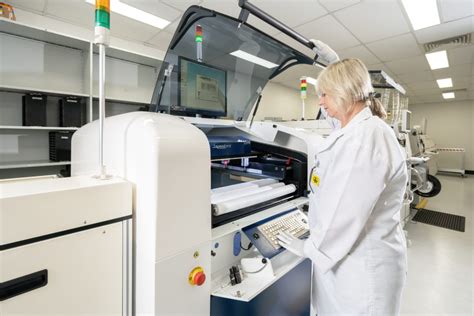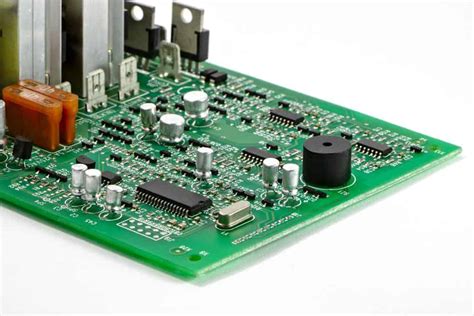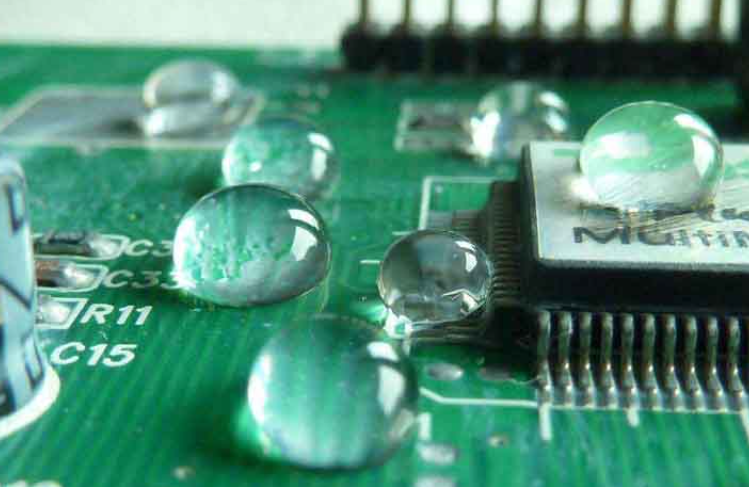Mastering Circuit Board Assembly: Essentials for Success
Key Takeaways
In the realm of pcb assembly, understanding the essential components is crucial for anyone looking to excel in this field. The process of assembling printed circuit boards, known as pcba, necessitates a solid grasp of materials and techniques to ensure optimal performance. One key takeaway is the importance of selecting high-quality components; inferior materials can lead to poor functionality and reliability. Additionally, familiarity with various tools, such as soldering irons, reflow ovens, and PCB layout software, enhances the efficiency of the assembly process. Overcoming common challenges—like component placement accuracy and thermal management—is also vital for attaining a successful assembly. By integrating these best practices into your workflow, you can not only enhance the quality of your pcba work but also stay ahead in an ever-evolving industry. Ultimately, mastering these fundamentals sets a solid foundation for anyone aiming to thrive in circuit board assembly, paving the way towards innovative advancements in technology.
Introduction to Circuit Board Assembly: Understanding the Basics
Understanding pcb assembly is crucial for anyone involved in electronics design and manufacturing. At its core, pcba involves assembling various components onto a substrate, such as a printed circuit board (PCB), to create a functional electronics assembly. This process requires familiarity with not just the components, but also the various materials and tools essential for successful assembly.
The typical pcb assembly process starts with choosing the right materials. High-quality components, such as resistors, capacitors, integrated circuits, and connectors, are vital to ensuring optimal functionality. The choice of substrate also plays a significant role; different types of PCBs—such as single-sided or double-sided—are suitable for different applications based on their complexity and performance needs.
In addition to material selection, the tools used during pcba are fundamental to achieving high precision and efficiency. Soldering iron, pick-and-place machines, and inspection equipment are just a few examples of the necessary tools that aid in the assembly process. Understanding how to effectively utilize these tools can greatly enhance both the speed and quality of your assembly work.
Moreover, grasping the basic principles of circuit design can significantly improve your assembly efforts. Recognizing how components interact within a circuit allows for better layout decisions during the design phase—a key consideration that can mitigate potential issues later in production.
In summary, mastering circuit board assembly not only requires knowledge of materials and tools but also a fundamental understanding of electronic principles that govern component behavior on a PCB. As you delve deeper into this field, these foundational aspects will serve as stepping stones towards more advanced techniques in optimizing performance in your assemblies.
| Key Elements | Description |
|---|---|
| Components | Resistors, capacitors, ICs |
| Substrates | Different types of PCBs (single-sided vs double-sided) |
| Tools | Soldering iron, pick-and-place machines |
| Design Principles | Interaction between components |
Essential Materials for Circuit Board Assembly
The success of pcb assembly hinges on the use of quality materials tailored for optimal performance. At the core of any pcba project are the base substrates, typically made from FR-4 or other composite materials that provide structural integrity and thermal conductivity. Additionally, electronic components such as resistors, capacitors, and integrated circuits must be carefully sourced to guarantee compatibility and reliability. The solder used in circuit board assembly plays a crucial role in ensuring strong and conductive joints; therefore, selecting between lead-based or lead-free options depending on environmental considerations is vital. Furthermore, adhesives are often employed to secure components, particularly in multilayer boards where space is at a premium. Lastly, investing in high-quality traces and pads ensures that electrical pathways are clear and efficient, reducing the risk of failure during operation. By choosing these fundamental materials wisely, manufacturers can achieve not only durability but also enhance the overall functionality of their pcb assembly processes.
Tools of the Trade: What You Need for Successful Assembly
In the realm of pcb assembly, possessing the right tools is pivotal for achieving successful outcomes. The essential tools can be categorized into a few key types. First, soldering equipment is crucial; high-quality soldering irons and solder are necessary for reliable connections on the pcba. Next, precision tools such as wire cutters, tweezers, and pliers help in handling small components with care and accuracy, ensuring that each part is correctly placed on the circuit board. Additionally, a good multimeter becomes indispensable for testing connections and diagnosing any issues during the assembly process.
Moreover, employing a well-ventilated workspace equipped with a good lighting system enhances visibility and reduces errors while working on intricate designs. Using anti-static mats and wrist straps can also prevent damage to sensitive components during handling. For those looking to take their assembly skills to the next level, incorporating automated tools such as pick-and-place machines can significantly improve efficiency and precision in assembling complex boards.
Understanding how each tool contributes to the overall process of circuit board assembly not only boosts productivity but also ensures that you yield high-quality results that meet industry standards. Consequently, investing in the right set of tools is not merely an option; it is necessary for any technician truly aiming for excellence in pcb assembly projects.
Step-by-Step Guide to the Assembly Process
In the process of pcb assembly, attention to detail and a well-structured approach are essential for achieving optimal results. The first step typically involves preparing the printed circuit board (PCB) and ensuring that it is clean and free from contaminants. This step sets the foundation for successful assembly. Next, components are placed on the board; this involves precise alignment and verification of each part, which is critical for avoiding errors down the line.
Once placement is complete, soldering techniques come into play, whether it be through wave soldering or reflow soldering, each chosen based on specific assembly requirements and component types. Throughout this operation, it is vital to monitor temperature and timing closely to prevent potential damage to sensitive components. After soldering, the inspection phase ensures that the pcba meets quality standards; this may include visual inspection or more advanced methods like automated optical inspection (AOI).
Finally, thorough testing of the assembled board is conducted to identify any faults. This comprehensive approach not only encompasses best practices but also reinforces the importance of mastering the fine details in pcb assembly for high-quality results and reliable performance in electronic devices. By following these steps meticulously, one can streamline processes while ensuring that each assembly meets industry standards for quality and reliability.
Common Challenges in Circuit Board Assembly and How to Overcome Them
In the realm of pcb assembly, several challenges can impede the smooth assembly process, potentially affecting overall product quality and performance. One notable difficulty is achieving proper alignment during the pcba process, which can lead to misplacement of critical components. To mitigate this issue, implementing precision tooling and jigs designed specifically for routing and placement can prove beneficial. Another common challenge is the handling and soldering of different component types, which may vary in size and shape. Utilizing appropriate soldering techniques tailored for each component type can enhance reliability and connectivity. Furthermore, managing thermal issues during soldering poses a persistent risk; excessive heat can damage sensitive components or the circuit board itself. Adopting best practices such as preheating techniques or using low-temperature solders can alleviate this concern effectively. Additionally, contamination from dust or improper handling can compromise the integrity of the pcb assembly. Ensuring a clean working environment along with implementing stringent handling protocols greatly reduces such risks, ultimately leading to a more robust final product.
Quality Control: Ensuring High-Quality Results in Assembly
In the domain of pcb assembly (PCBA), maintaining stringent quality control is paramount for achieving superior results. Quality control practices not only ensure that the circuit boards function correctly but also help in identifying potential defects early in the assembly process. Implementing a robust quality control system involves several critical steps, including thorough inspections of raw materials, monitoring environmental conditions during assembly, and conducting tests on the finished products. For instance, visual inspections can detect any misalignment or soldering defects on the pcb, while automated optical inspection (AOI) systems can be employed to provide comprehensive assessments that are often beyond human capability. Furthermore, adopting standard operating procedures (SOPs) can streamline quality checks and help team members understand their critical roles in ensuring each pcba meets established specifications. By fostering a culture of quality awareness and implementing continuous improvement practices, manufacturers can significantly reduce errors, enhance reliability, and ultimately optimize product performance in a highly competitive landscape.
Advanced Techniques for Optimizing Circuit Board Performance
To achieve optimal performance in pcb assembly, it is crucial to employ advanced techniques that enhance the efficiency and efficacy of the pcba process. One effective method is to utilize high-frequency materials that minimize signal loss and improve overall circuit integrity. Additionally, implementing advanced design for manufacturability (DFM) principles ensures that the layout of electronic components promotes better solder flow, leading to stronger connections and reduced defects.
Thermal management is another critical aspect; using thermal vias and appropriately placed heat sinks can significantly improve heat dissipation, thereby preventing overheating during operation. Moreover, selecting the right soldering techniques, such as reflow soldering or wave soldering, depending on the complexity of the circuit, can enhance joint reliability and consistency in pcb assembly processes.
Regularly updating manufacturing equipment and software to adopt automation can lead to not only greater precision but also faster production times, reducing the likelihood of human error. Implementing rigorous testing protocols post-assembly ensures that any deviations from expected performance can be identified and rectified early in the manufacturing process. By combining these strategies with a solid understanding of materials and tools, manufacturers can significantly optimize both quality and performance in their circuit board assemblies.
Future Trends in Circuit Board Assembly Technology
The landscape of pcb assembly is constantly evolving, driven by technological advancements and the increasing demand for miniaturization and efficiency. One of the most significant trends in pcba technology is the rise of automation in the assembly process. Automated systems are significantly enhancing precision and speed, reducing human error, and streamlining production lines. Additionally, the integration of smart technologies such as the Internet of Things (IoT) is augmenting assembly processes by providing real-time data analytics for performance monitoring and predictive maintenance. This not only improves overall efficiency but also ensures that issues can be detected early before they escalate into larger problems.
Another promising trend involves the shift towards more environmentally friendly materials and processes. As industries are increasingly focused on sustainability, pcb assembly practices are incorporating eco-friendly materials that reduce waste and energy consumption. This not only meets regulatory demands but also appeals to conscious consumers who prefer environmentally responsible products.
Furthermore, with advancements in 3D printing technologies, the prototyping phase of pcba has become more efficient and cost-effective. Engineers can rapidly create prototypes to test designs before moving to full-scale production. This capability allows for faster iteration cycles and greater design flexibility.
Overall, staying attuned to these trends is essential for manufacturers aiming to maintain a competitive edge in the pcb assembly market. Adapting to automation, sustainable practices, and innovative technologies will not only enhance production capabilities but also improve product quality and customer satisfaction in an ever-evolving technological landscape.
Conclusion
In conclusion, mastering pcb assembly involves a firm grasp of both fundamental principles and advanced techniques. Throughout this guide, we have explored the essential materials and tools necessary for successful pcba. Understanding the entire assembly process is crucial, as it helps in identifying common challenges and implementing effective solutions to overcome them. Quality control remains a cornerstone of producing high-quality results, ensuring that your finished product meets industry standards. Looking ahead, staying abreast of future trends in circuit board assembly technology can provide competitive advantages and enhance overall performance. To summarize, it is essential to prioritize both the knowledge of current practices and an openness to innovate as technology evolves.
“Continuous learning and adaptation are key to maintaining excellence in pcb assembly.”
The importance of a solid foundation in both materials and techniques cannot be overstated; it serves as the backbone for achieving optimal outcomes in circuit board assembly projects. Whether you are embarking on a new project or refining existing processes, the commitment to understanding and applying these principles will guide you toward success in the dynamic field of pcba.
FAQs
What is PCB assembly?
PCB assembly, or PCBA, refers to the process of soldering electronic components onto a printed circuit board (PCB) to create a functional electronic device.
What materials are required for PCB assembly?
For successful PCB assembly, you typically need a printed circuit board, electronic components (like resistors, capacitors, and ICs), soldering materials (such as solder paste), and sometimes adhesives.
What tools are essential for the PCB assembly process?
Essential tools for PCBA include a microscope for inspection, soldering irons for manual assembly, pick-and-place machines for automated processes, and reflow ovens for soldering.
How can I ensure high quality in my PCB assemblies?
To ensure high-quality results in your PCB assembly, implement rigorous quality control measures such as visual inspections, testing of assembled boards, and using high-quality materials and tools.
What are some common challenges faced in PCB assembly?
Common challenges include component placement accuracy, solder joint quality, and issues with the thermal management of components. Employing best practices can significantly mitigate these challenges.
How can I stay updated on trends in PCB assembly technology?
Staying informed about future trends in PCBA technology can involve reading industry publications, attending workshops or seminars, and joining relevant professional organizations or forums.







